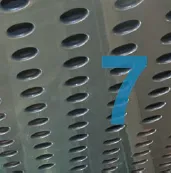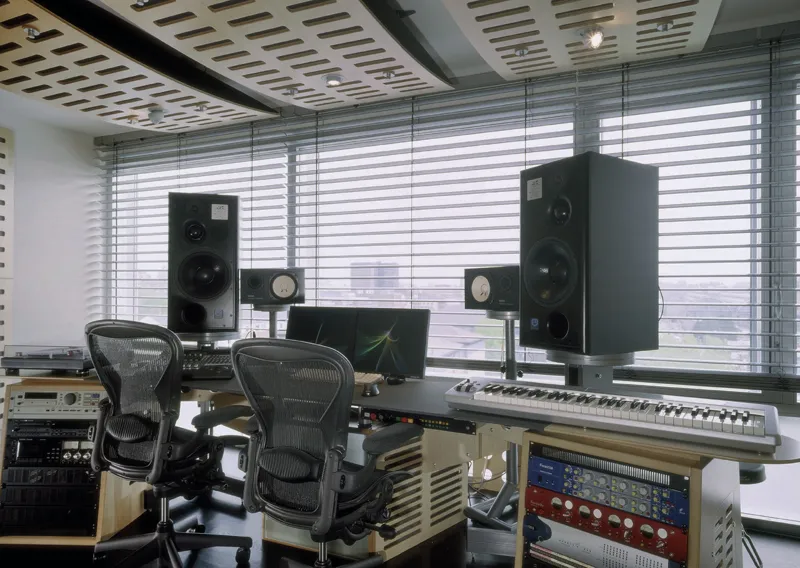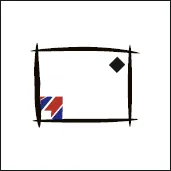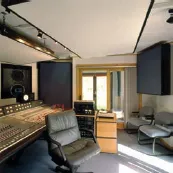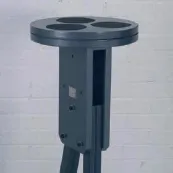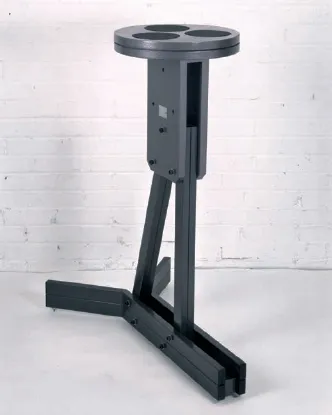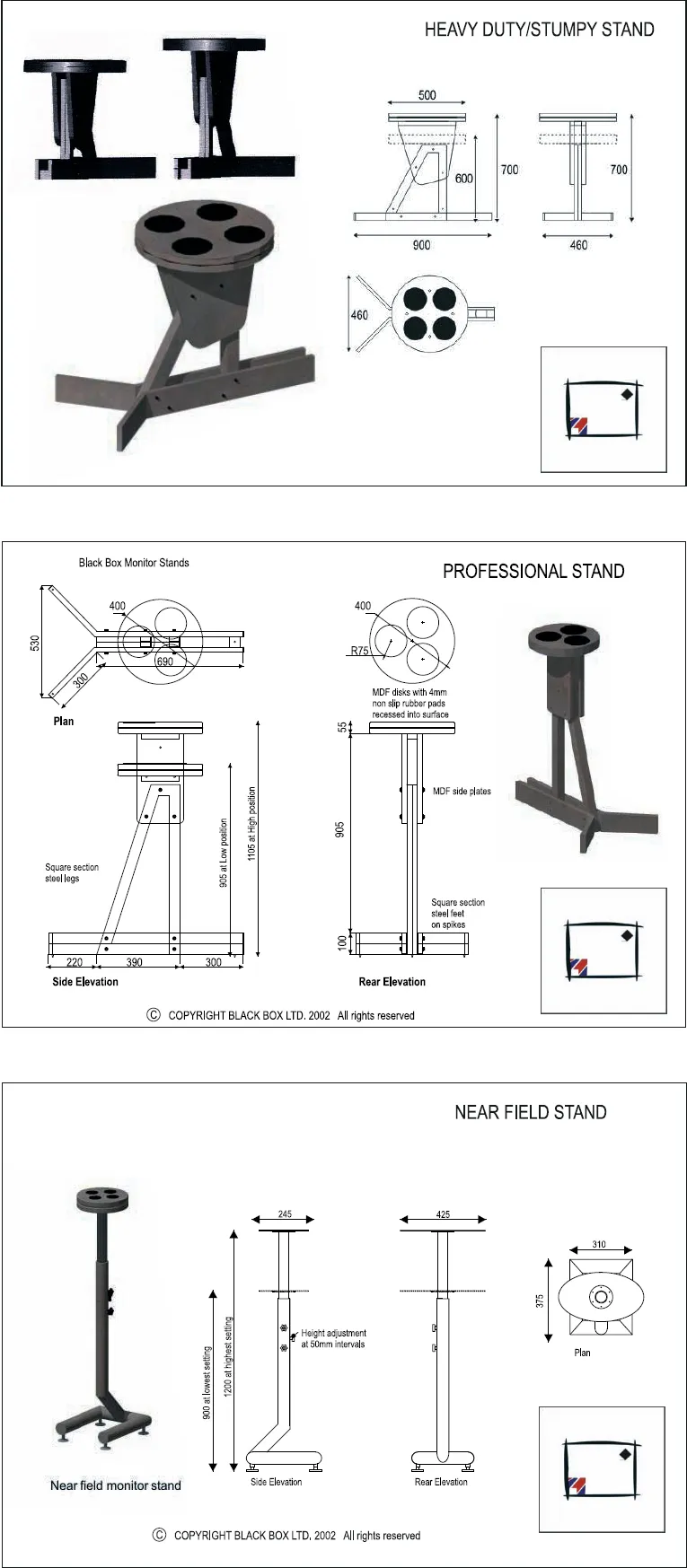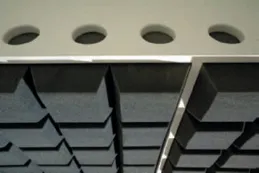![]()
There are occasions when a fully specified, architecturally complex acoustic solution may not be viable or appropriate. Acoustic treatment may need to be easily demountable – for example in temporary situations (see “A house in the country”) or in rented spaces with limited tenure. In other situations, there may be acute pressure of time and a requirement for a rapid solution to room acoustic issues - or there may be restricted time to carry out the installation itself. For these reasons, RA developed Black Box, a highly efficient and cost-effective, pre-fabricated and demountable acoustic conditioning system.
Black Box comprises a number of factory-made, self-contained and pre-finished elements designed to address the specific aspects of acoustic conditioning - principally frequency-selective absorption and diffusion. The elements are based upon sections of the acoustic treatment techniques regularly employed in RA’s full-scale architectural projects and were conceived under the same ground rules of acoustics, architectural design, ergonomics, building technology and interior design. The principal elements are detailed on the following pages. They include the Wide Band Absorber and the Suspended (or Wall-mounted) Diffuser/Absorber - the highly successful Professional Monitor Stands and EggBox systems are examined in later sections.
The wide band absorber combines low frequency membrane absorption (providing maximum absorption around 60-70 Hz but effective from 40 Hz for just under two octaves) with frictional energy dissipation - the element offers 50% efficiency below 125Hz and better than 70% above 200Hz. The absorber/diffuser, highly dependent on its position relative to room boundaries, can offer better than 70% efficiency above 125Hz and mid frequency diffusion centred around 1 kHz.
Positioning is absolutely critical to the performance of the elements and is illustrated in a selection of installations on the facing page. The pressure-sensitive membrane absorption, incorporated within the wide band unit, naturally benefits from a high (or low) level corner location (where the maximum sound pressure build-up occurs as the maximum number of boundaries coincide). The suspended units benefit from a central room location, held away from the walls or suspended from the ceiling.
There are some further, economic advantages of Black Box. Firstly, although systems are custom-manufactured to order in every case, no architectural design fees are incurred due to a standard pattern being employed. Secondly, as installation is usually a relatively straightforward procedure, potentially expensive building contractors may well not need to be engaged. Finally, because everything is prefabricated in factory conditions, cost is a completely predictable and fixed entity.
However, the main advantage generally remains one of speed - while a studio is being prepared (built from scratch as an isolated shell or simply involving the decoration of an existing space), the Black Box system can be specified, manufactured, and then bolted into position in a matter of hours.
The Black Box Professional Monitor Stand was originally developed to fill a gap in the market - there simply hadn’t been a commercially available equivalent capable of doing the job. To perform effectively, a speaker requires a stable, rigid mount - a fact the Hi-Fi world has been aware of for many years but which pro-audio manufacturers seemed to have overlooked.
The Problem
Although speaker diaphragms tend to be of low mass (relative to the mass of the cabinet), they travel at high velocities, generating large amounts of kinetic energy, which is intended to be radiated to the listener. As dictated by Newton’s Third Law of Motion (“For every action, there is an equal and opposite reaction”), any forward action of the speaker diaphragm will have an equal backwards reaction, resulting in movement of the cabinet. This movement will reduce the efficiency with which the sound energy is radiated from the speaker, heard as smearing of low frequency transients and a perceived lack of low frequency “impact”. In the worst case, where a speaker is put on a non-rigid mount, the low frequency energy tends to be stored in the compliant (“bendy”) mount and is slowly released but with the mount’s decay function superimposed. The subjective effect is not just smearing and lack of impact, but also a masking of the mid and high frequency detail and imaging qualities of the speaker. Whilst these problems have been addressed in the design of Hi-Fi speaker stands, in domestic situations stands tend to be less than 0.5m in height, enabling the various pillars and cantilevers frequently employed to work reasonably well. Unfortunately, these stands are simply too short for the recording environment, where the monitoring system needs to be held sufficiently high to clear the meter bridge of a mixing console. This typically requires a stand of over 900mm in height and capable of rigidly supporting monitors potentially in excess of 100kg in weight. Simply “stretching” the design of a domestic stand would result in a mount that is compliant and inherently unstable, relying on mass at the base to even stand up.
The Solution
The Black Box Monitor Stand has been designed with maximum rigidity and damping in mind. With a stand of over 1m in height, the “footprint” needs to be in the order of 1m to maintain stability but by maximising rigidity in the plane of the speaker diaphragm, the footprint has been kept down to manageable proportions.
In addition to providing a rigid support, the stand is designed to be inert to render it incapable of imposing any of its own characteristics (eg. resonances) on the perceived output from the loudspeaker. To achieve this, the metal rectangular tubes which comprise the legs and uprights are used in double sections, welded at crucial points, allowing frictional contact between the two. Together with the MDF saddle, this damps any significant potential resonance’s in the frame.
Construction
The top plate is constructed from an MDF/damping layer “sandwich” with pads of belt type rubber to maximise friction between the stand and speaker cabinet. Holes are provided to bolt through to the speaker cabinet should this be required. The triangulation of the base unit and 3 spiked feet provide the necessary stabilisation and ensure rigidity, the spikes proving particularly useful when mounting on carpeted floors. “Earthquake stabilisers” can be added where regional conditions dictate or where lateral stability needs to be provided.
Whilst allowing for the triangulation and large footprint necessary for stability, the stand has been designed to fit around most available mixing desks. The off-set centre column is reversible in direction (which shifts the monitor relative to the base) and the saddle is adjustable to provide the two most commonly required working heights (inserts can be added to increase incrementally as required).
| EggBox acoustic control systems |
EggBox was developed as a no-frills, cost-effective alternative to Black Box and was launched in 2007. By limiting the finish options offered to a standard birch-faced plywood (for the perforated panels/membrane absorption chamber surrounds) and by exposing the acoustic foam, significant cost savings were achieved. The acoustic performance remained uncompromised in comparison to the equivalent Black Box elements – in fact, by removing the cloth covering and its edge-support (to the suspended ceiling/wall panels - “Scramblers”), it was necessary to utilise a thicker base-slab of acoustic foam for stability, which actually extends the effective frequency range that is absorbed.
A more straightforward fixing system, based on simple wall/ceiling plates plus threaded rods and sockets, was also developed, further reducing costs and simplifying installation. The resulting “robust” look and even more open expression of the acoustic components appealed to many clients and EggBox frequently became the preferred option over Black Box, for aesthetic as well as cost reasons. The Whiterooms at Cream are divided equally – three suites are treated with Black Box and three with EggBox acoustic conditioning systems. The technique has particularly appealed to educational facilities.
The various elements are illustrated in detail over the following pages. Below is an image of Balea Music – a commercial studio, built from scratch as independent isolated shells within ground floor office space below residential flats in the centre of Bilbao, Spain. At the top of the facing page is the original EggBox proposal prepared for MANCAT (Manchester College of Art and Technology). At the bottom is the main “rout...

